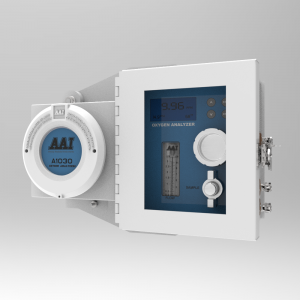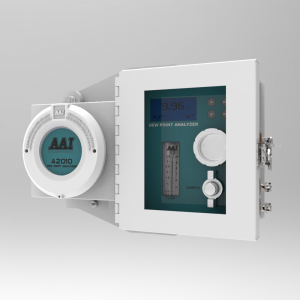For stationary gas detectors, the system configuration of on-site gas detection + controller centralized display interlocking is essential. For the two different wiring methods, they are commonly used in the bus system and branch line system, how to choose? This time Van Andy analyzes the advantages and disadvantages of the two for customers to refer to when choosing.
How to distinguish between the bus system and the line system?
The bus system is exactly what the name implies, that is, one line connects all products in series. For bus system wiring, as long as one pipeline is equipped, each device is connected across this one pipeline, and the controller knows the location and situation of each device through the address code of the detector.
The sub-line system is sometimes called a multi-line system, that is, each detector is equipped with 1 pipeline to the controller, and the controller knows the location of each device at a glance.
In addition to the difference in wiring methods between the bus and the branch line, there are differences in many other places. For example, the bus system uses RS485 signals, while the branch system uses 4-20mA signals. In fact, the easiest point to distinguish between the bus and the branch line is to look at the terminal blocks of the controller. If the connection is 4 cores and the number of cables is far less than the number of gas detectors, it must be a bus system. If the connection is a 3-core cable and the number of cables is equal to the number of gas detectors, it is a split-wire connection.
Advantages of the bus system:
- Reduce the troublesome maintenance due to the inconsistency of the equipment signal system.
The signals used by many of our existing DCS systems are not a unified standard. The analog signals include different current and voltage signals of 4-20mA and 0-5V, which bring great inconvenience to the maintenance work. The bus control system does not have this inconvenient factor at all, and the data is transmitted in the same form on the data line, which enhances the reliability of the data.
- Reduce installation workload and improve work efficiency.
The obvious advantages of the bus system are the small amount of wiring, simple wiring, and low cost. Four-bus system, two signal lines, two power lines, wiring is simple and convenient.
- To a certain extent, improve the safety of the unit.
There are many cases in the current DCS system where signal grounding burns out the control system’s IO card or the control system’s power supply is short-circuited and de-energized, causing the system to operate in a fault state or an unplanned outage. It is very difficult to investigate after such an accident, which is labor- and time-consuming. The generation of the field bus can easily solve this problem, and at the same time, it is convenient to find the faulty equipment.
Disadvantages of the bus system:
- Information lag
The data refresh is too slow, and the more urgent it becomes, the more difficult it is for many operators to criticize the bus control system. If there are many points, the amount of data transmitted at a single point will be large, and the delay time of the transmission signal will be longer. It cannot respond effectively and timely to the situation on the spot, especially for safety control instruments, which may cause major accidents.
- Dangerous concentration
With the rapid development of the petrochemical industry, the scale of the equipment has become larger and more continuous. In addition, the chemical process has the characteristics of flammable, explosive, high temperature, high pressure, toxic, harmful and corrosive. The production control system will be slightly lost. It will lead to catastrophic accidents and cause irreparable major losses in production, equipment, personnel, and the environment. Therefore, for the control system of large petrochemical production equipment, its safety and reliability are overriding important and necessary, even if the control system fails or is damaged (it is impossible for any control system to be free from failure or damage). The number of affected control points should be as few as possible, and the affected production area should be as narrow as possible. In this way, after the dead pixels are removed, production personnel can maintain safe production according to relevant process parameters; maintenance personnel can handle individual dead pixels more easily and easily, and of course, it is also safe.
How to set up a field bus meter? Each segment (four buses) leading to the scene drags multiple bus-type instruments on the scene. The four-bus trunk is both a power supply bus for multiple measurement detectors and a bus for transmitting signals up and down. The four-bus trunk undoubtedly drives multiple gas detection instruments in a production area or production unit. Any loss of this field bus trunk will affect all nodes on the four-bus trunk. For continuous production petrochemical production equipment, multiple measurement points and multiple gas detectors in a production area or production unit suddenly lose control at the same time. What a horrible scene to face a rumbling production equipment. This is a typical manifestation of danger concentration.
Although the user is reminded in the application guide that twisted-pair wires cannot be grounded, short-circuited, and open-circuited are the rules that users must abide by absolutely, how can the ever-changing production site do it absolutely? Even if it is done, the related cards, isolation barriers, components, terminals, etc. of the bus system can never be a problem? The above failure example is a typical example of “dangerous concentration”.
- Power supply problems
The power supply problem is also a problem that has always plagued the bus system. For the occasions with explosion-proof requirements on the site, use DC24V power supply. If all instruments are powered by a centralized bus, the voltage drop generated on the power supply bus may cause end-end instruments to malfunction. . Therefore, bus products often have special instructions for power supply. Generally, a DC power source can drive no more than 30 channels of the machine. Reduce the power supply current and reduce the voltage drop on the line. The power supply must be close to the scene, which requires the power supply to be installed in the field explosion-proof box. This is very detrimental to the heat dissipation of the power supply, it will greatly reduce the life of the power supply, and even dangerous accidents will occur.
- Cost issues
Many people think that the bus system cost is low. If it is only from the perspective of ministry and construction, it will save costs. However, from the perspective of the entire project, the bus system cannot be compatible with the same type of products on the market (non-modbus protocol). There are manufacturers to replace, maintenance and debugging need corresponding customized software and some professional peripheral equipment, the cost and maintenance costs are much higher than the branch line system.
Fourth, the advantages of the line system:
- Synchronous data transmission, timely response
Compared with the bus system, each gas detector in the sub-line system communicates with the controller separately, which can timely transmit the scene conditions to the control section, so that the monitoring personnel can make a timely and effective judgment, and the peripheral control equipment should be timely. Effectively take corresponding control actions to avoid dangerous accidents.
- Dispersion of danger
Multiple detectors are installed in the same production area or production unit. Once a detector line fails, it will not affect the normal operation of other detectors. In this way, leakage in the area can still play a protective role.
- There are no restrictions on power supply.
For decentralized detectors, the power supply is not as stringent as the bus system, and it is relatively simple.
- 4. Simple replacement
For sub-line gas detectors, they can be replaced between different brands later (only for poisonous gas, combustible gas is included in CCC certification, product matching needs certification, but cannot be replaced is only a policy requirement, not a technical issue).
- Disadvantages of the split line system:
- Complex wiring
There is a large amount of wiring, a large workload, complicated wiring, complicated installation and construction, and high material costs.
- There are many types of transmission signals and large interference
The transmitted signals are 0-5V, 4-20mA, pulse signal, level type or contact type switching signal, power source resistive current signal (greater than 50mA), etc. The interference between the signals is unavoidable, and it is possible to a certain extent Failures such as false alarms and zero drift can occur.
In general, the introduction of the advantages and disadvantages of the bus system and the branch system is only for each other. Both are very mature solutions on the market. Which one is more suitable is recommended. It is recommended that you directly consult the technology. Professional after-sales engineers help you choose.
View more oxygen analyzer at www.avcray.com.




